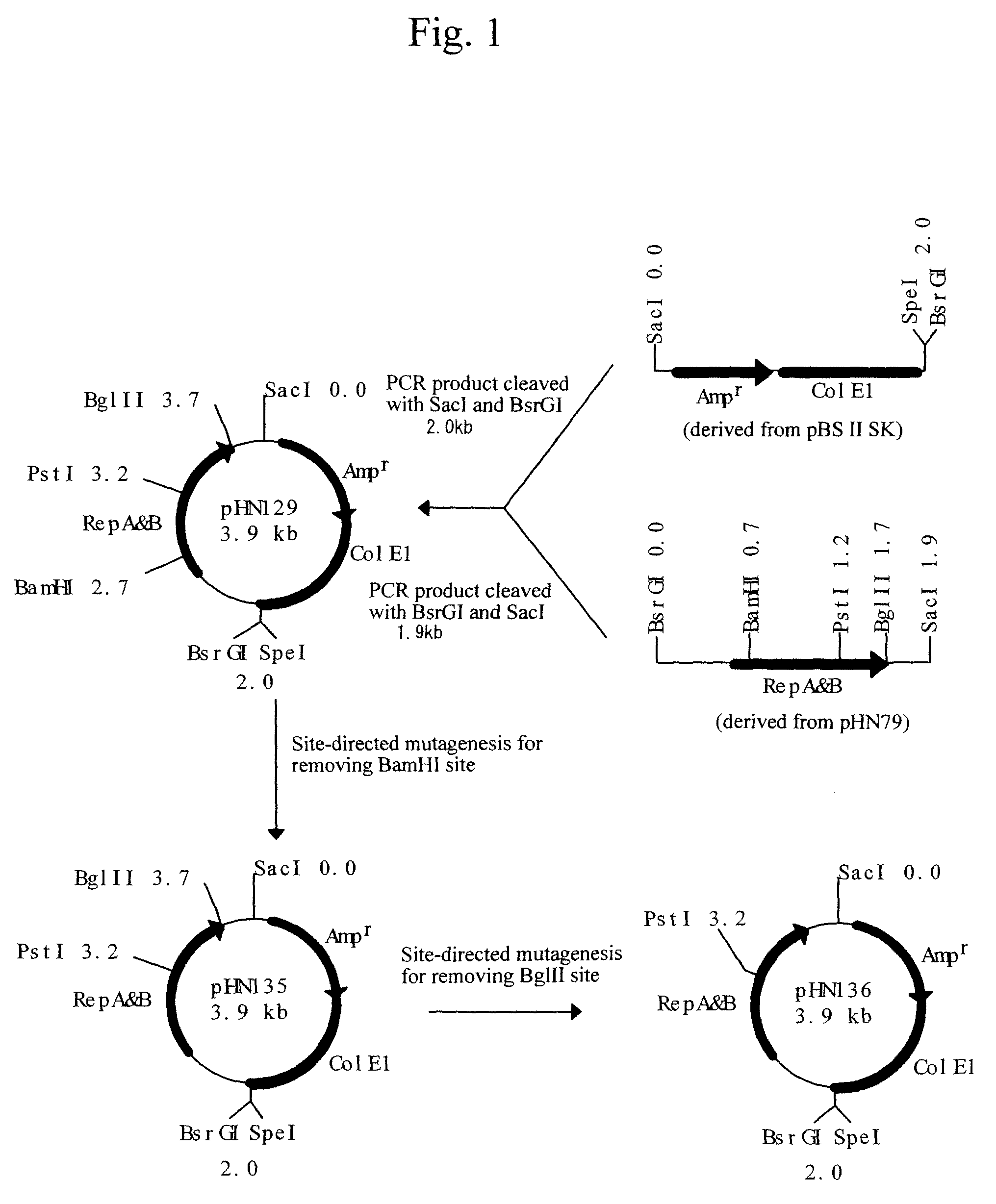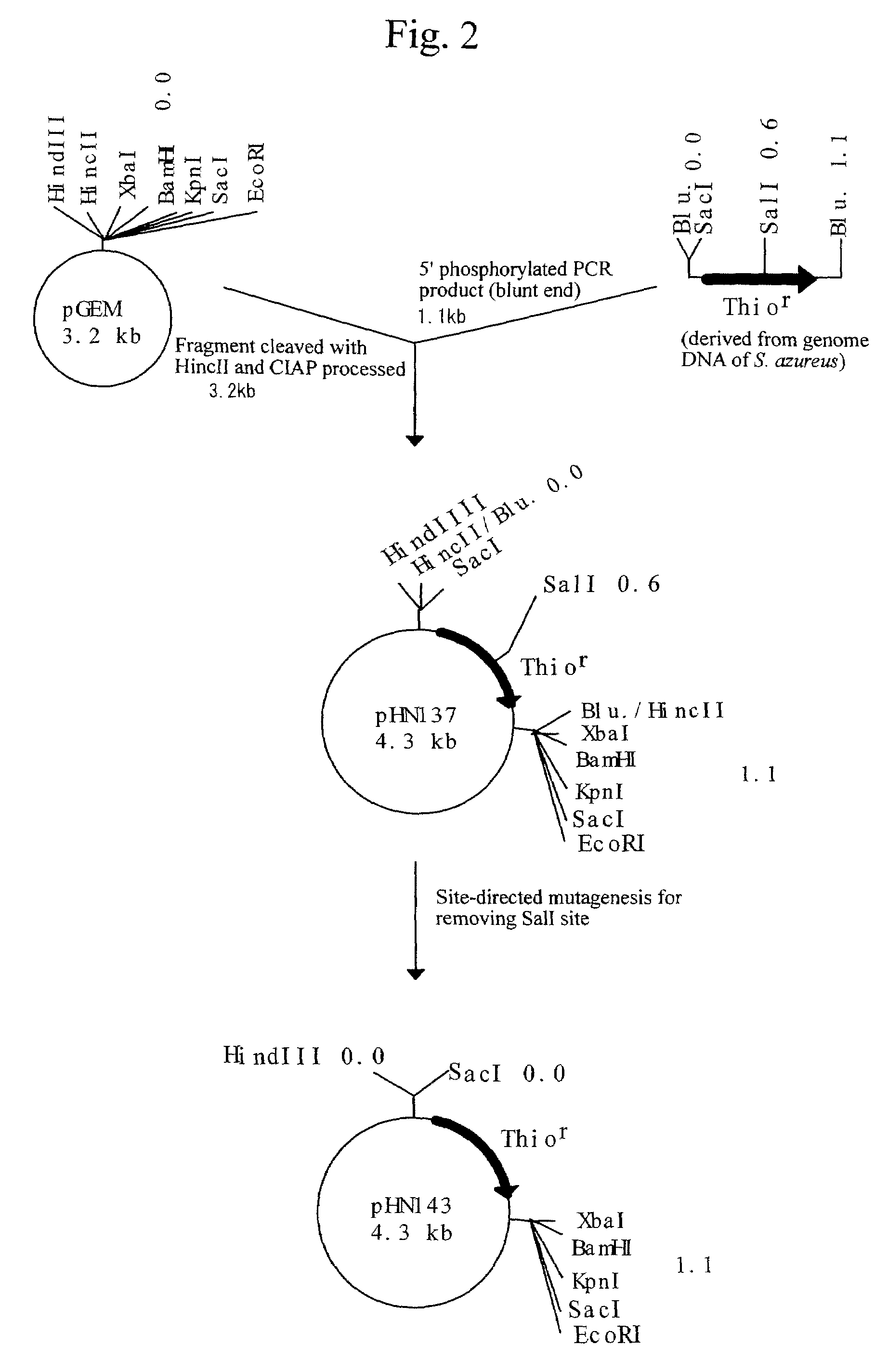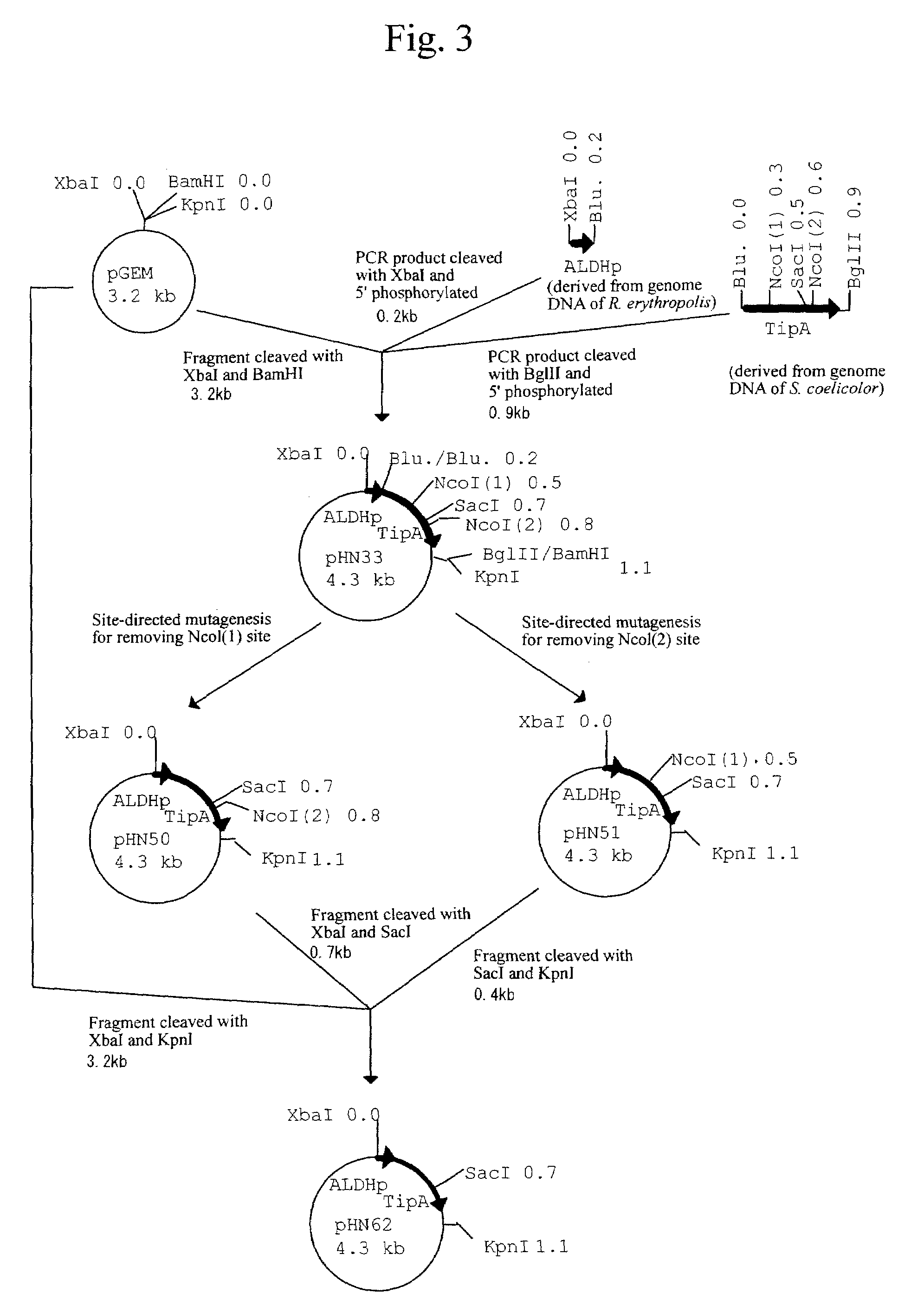Process for producing recombinant protein in bacterium belonging to the genus Rhodococcus
a technology of rhodococcus and recombinant protein, which is applied in the field of expression vectors, can solve the problems of insufficient development of constitutive expression vectors, foreign genes having difficulty in simultaneously and stably coexisting, etc., and achieve the effect of inhibiting the proliferation of host cells and maintaining stably
- Summary
- Abstract
- Description
- Claims
- Application Information
AI Technical Summary
Benefits of technology
Problems solved by technology
Method used
Image
Examples
reference example 1
(1) Separation of a Rhodococcus Erythropolis-derived Plasmid Capable of Autonomous Replication in Bacterium Belonging to the Genus Rhodococcus and Determination of its Partial DNA Sequence
[0104]For constructing a shuttle vector between Rhodococcus erythropolis and Escherichia coli, a small endogenous plasmid present in a bacterium belonging to the genus Rhodococcus was initially searched. As a result, its presence was confirmed in a Rhodococcus erythropolis strain JCM2895. This plasmid was designated as pRE2895. Hereinafter, the separation of the plasmid and the determination of its DNA sequence will specifically be described.
[0105]The QIAprep Spin Miniprep Kit (manufactured by QIAGEN) was used to purify pRE2895 from the cells of a Rhodococcus erythropolis strain JCM2895 cultured at 30° C. for 30 hours in 5 ml of a LB medium (1% Difco Bacto Tryptone, 0.5% Difco Yeast Extract, and 1.0% sodium chloride). These procedures were conducted according to the instruction except that the bact...
example 1
Experimental Method
[0163]At first, approaches used in experiments described in Examples 2 to 12 below are enumerated.
[0164]All plasmids were constructed according to an ordinary method (Sambrook et al., Molecular Cloning: a laboratory manual, 2nd edition [1989], Cold Spring Harbor Laboratory Press, Cold Spring Harbor, N.Y.). All polymerase chain reaction methods (hereinafter, abbreviated to PCR; Saiki et al., Science 239 487-491 [1988]) employed the Pfu turbo (manufactured by STRATAGENE). DNA fragments excised from the plasmids were subjected to 1.0% agarose gel electrophoresis, and DNA fragments of interest were excised from the gels and purified using the QIA quick Gel Extraction Kit (manufactured by QIAGEN) according to the instruction. Procedures for separating the genomic DNAs of a Streptomyces coelicolor strain A3(2) and a R. erythropolis strain DSM313 and for purifying plasmid DNA from a bacterium belonging to the genus Rhodococcus were performed in the same way as described ...
example 2
Separation of Novel Endogenous Plasmid pRE8424 Present in R. Erythropolis
[0169]The present inventors searched for a novel endogenous plasmid present in R. erythropolis and found small circular plasmids from four strains, R. erythropolis JCM2893, R. erythropolis JCM2894, R. erythropolis DSM43200, and R. erythropolis DSM8424. These plasmids were designated as pRE2893, pRE2894, pRE43200, and pRE8424, respectively.
[0170]Of these plasmids, the DNA sequences of the plasmids pRE2893, pRE2894, and pRE43200 were partially determined. As a result, they had a sequence nearly identical to that of the pRE2895 (see Reference Example 1), which had been separated previously by the present inventors from an R. erythropolis strain JCM2895. The pRE2895 has, as RepAB operon, genes encoding RepA and RepB proteins, which are involved in the replication of plasmids. These proteins are highly similar to RepA and RepB proteins encoded by a plasmid pAL5000 separated from Mycobacterium fortuitum, and it has ...
PUM
| Property | Measurement | Unit |
|---|---|---|
| temperature | aaaaa | aaaaa |
| temperatures | aaaaa | aaaaa |
| temperatures | aaaaa | aaaaa |
Abstract
Description
Claims
Application Information
 Login to View More
Login to View More - R&D
- Intellectual Property
- Life Sciences
- Materials
- Tech Scout
- Unparalleled Data Quality
- Higher Quality Content
- 60% Fewer Hallucinations
Browse by: Latest US Patents, China's latest patents, Technical Efficacy Thesaurus, Application Domain, Technology Topic, Popular Technical Reports.
© 2025 PatSnap. All rights reserved.Legal|Privacy policy|Modern Slavery Act Transparency Statement|Sitemap|About US| Contact US: help@patsnap.com



